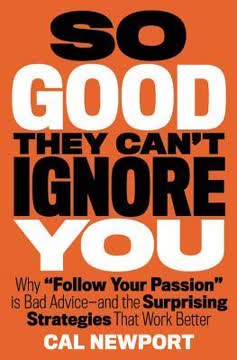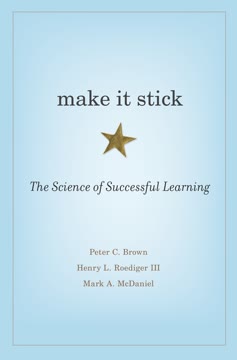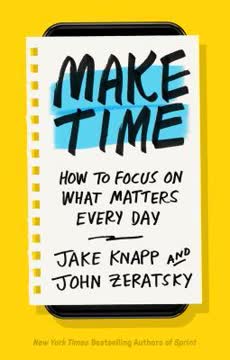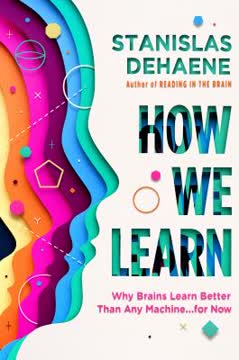Key Takeaways
1. Master the Pomodoro Technique to beat procrastination and boost focus
To do it: – Remove distractions. – Set a timer for 25 minutes. – Focus as intently as you can for those 25 minutes. – Reward yourself. Take a 5-minute or so mental break. (Use a timer for the break if necessary.) – Do another Pomodoro until the work—or you!—is done.
Beat procrastination with Pomodoros. The Pomodoro Technique is a powerful method to overcome procrastination and maintain focus. Start by removing all distractions, including silencing your phone and closing unnecessary browser tabs. Set a timer for 25 minutes and focus intensely on your task during this period. When the timer rings, take a 5-minute break to recharge. Repeat this cycle until your work is complete.
Leverage the technique's psychological benefits. The Pomodoro Technique works by breaking work into manageable chunks, reducing the initial resistance to starting a task. It also capitalizes on the brain's ability to focus for short periods, followed by brief rest intervals. This pattern helps maintain high levels of concentration and productivity throughout your study session.
Key steps:
- Remove distractions
- Set a 25-minute timer
- Focus intensely
- Take a 5-minute break
- Repeat as needed
2. Harness the power of focused and diffuse modes for effective learning
Learning often involves going back and forth between focused and diffuse modes.
Understand the two modes of thinking. The brain operates in two distinct modes: focused and diffuse. The focused mode is engaged when you're concentrating intently on a specific task or problem. The diffuse mode, on the other hand, is activated when your mind is relaxed and allowed to wander freely.
Alternate between modes for optimal learning. To learn effectively, it's crucial to utilize both modes. Start by focusing intensely on the material you're trying to learn. When you hit a roadblock or feel stuck, take a break and allow your mind to enter the diffuse mode. During this time, your brain continues to work on the problem subconsciously, often leading to new insights and solutions. Return to focused mode to build on these insights and solidify your understanding.
Focused mode activities:
- Solving problems
- Memorizing information
- Analyzing complex concepts
Diffuse mode activities:
- Taking a walk
- Engaging in light exercise
- Meditating or daydreaming
3. Employ active recall and spaced repetition to solidify long-term memory
Oddly enough, the best way to put information into your long-term memory is to try to retrieve it from your own long-term memory instead of just looking at the answer.
Practice active recall regularly. Active recall, or retrieval practice, is one of the most effective ways to strengthen your memory and understanding of a subject. Instead of passively rereading your notes or textbook, challenge yourself to recall the information without referring to the source material. This process strengthens the neural connections associated with that knowledge, making it easier to retrieve in the future.
Implement spaced repetition. Combine active recall with spaced repetition to maximize long-term retention. Rather than cramming all your studying into one long session, spread it out over time. Review the material at increasingly longer intervals, such as after one day, one week, and one month. This approach capitalizes on the brain's natural forgetting curve, reinforcing the information just as it's starting to fade from memory.
Active recall techniques:
- Self-quizzing
- Summarizing from memory
- Teaching the material to others
Spaced repetition schedule example:
- Day 1: Initial learning
- Day 2: First review
- Day 7: Second review
- Day 30: Third review
4. Maximize working memory by chunking information and taking effective notes
Working memory is only a temporary holding place for thoughts and information. When you put something in working memory, it can seem as if you've truly learned it. But learning only happens when you secure the idea, concept, or technique in long-term memory.
Chunk information to expand working memory capacity. Working memory typically holds only about four pieces of information at once. To overcome this limitation, group related information into meaningful chunks. This allows you to process and remember more complex ideas by treating each chunk as a single unit of information.
Take effective notes to support learning. Develop a note-taking system that helps you process and organize information efficiently. One effective method is the split-page technique: divide your page into two columns, using the right side for main ideas and the left for summary keywords or questions. This approach facilitates active engagement with the material and makes it easier to review later.
Chunking strategies:
- Group related facts or concepts
- Create acronyms or mnemonics
- Identify patterns or hierarchies
Effective note-taking tips:
- Use your own words
- Include diagrams or visual aids
- Review and summarize notes regularly
5. Utilize mnemonic devices and metaphors to enhance memorization
Memory and understanding are connected. Having key information memorized so you can readily call it to mind releases mental power and helps you work more easily at higher conceptual levels.
Employ mnemonic devices for efficient memorization. Mnemonic devices are memory aids that help you associate new information with existing knowledge or create memorable patterns. These techniques can significantly improve your ability to recall facts, lists, and complex concepts. Common mnemonic devices include acronyms, visualization, and the memory palace technique.
Leverage metaphors for deeper understanding. Metaphors are powerful tools for grasping and remembering abstract concepts. By comparing a new idea to something familiar, you create a mental bridge that aids in comprehension and recall. Actively seek out or create metaphors for the concepts you're learning to enhance your understanding and memory.
Mnemonic device examples:
- Acronyms (e.g., ROY G. BIV for colors of the rainbow)
- Visualization (e.g., picturing a vivid scene to remember a historical event)
- Memory palace (associating information with locations in a familiar place)
Steps to create effective metaphors:
- Identify the key aspects of the concept
- Think of familiar objects or experiences with similar characteristics
- Draw parallels between the concept and the familiar item
- Refine the metaphor to highlight the most important points
6. Develop intuition through deliberate practice and interleaving
To develop your problem-solving intuition, you should internalize different types of problems, each over several days, until the solutions flow out easily with no peeking.
Engage in deliberate practice. To develop intuition and expertise in a subject, engage in deliberate practice. This involves working on challenging problems that push you slightly beyond your current abilities. Focus on internalizing key concepts and problem-solving techniques rather than simply memorizing solutions. As you practice, pay attention to the underlying patterns and principles that guide problem-solving in your field.
Implement interleaving in your practice. Interleaving involves mixing different types of problems or concepts within a single study session. This approach helps you develop a more flexible understanding of the material and improves your ability to discern which techniques to apply in various situations. While interleaving may feel more challenging initially, it leads to better long-term retention and transfer of skills.
Deliberate practice strategies:
- Set specific goals for each practice session
- Seek immediate feedback on your performance
- Analyze your mistakes and adjust your approach
Interleaving techniques:
- Mix problems from different chapters or topics
- Alternate between related skills or concepts
- Vary the order of practice questions
7. Cultivate self-discipline by removing obstacles and creating positive habits
To succeed with little or no willpower, remove temptations, distractions, and obstacles. Set things up beforehand to make it as easy as possible to get started.
Remove obstacles to success. Self-discipline is a limited resource, so it's crucial to create an environment that minimizes the need for constant willpower. Identify and eliminate potential distractions or temptations that might derail your study efforts. This might include turning off notifications on your devices, finding a quiet study space, or preparing your materials in advance.
Develop positive habits to automate good behaviors. Building habits is an effective way to reduce the mental effort required for productive behaviors. Start by identifying small, specific actions that contribute to your learning goals. Implement these actions consistently, linking them to existing routines or environmental cues. Over time, these behaviors will become automatic, requiring less conscious effort to maintain.
Strategies to remove obstacles:
- Create a dedicated study space
- Use website blockers during study sessions
- Prepare study materials in advance
Steps to build positive habits:
- Choose a small, specific action
- Link it to an existing routine or cue
- Practice consistently for at least two months
- Gradually increase the complexity or duration of the habit
8. Boost motivation by finding value, experiencing mastery, and setting SMART goals
Motivation is not something you either have or don't have—it can be created, strengthened, and maintained using different techniques.
Find personal value in your studies. Motivation increases when you perceive value in what you're learning. Actively seek connections between your studies and your personal interests, career goals, or real-world applications. Reframe challenging tasks as opportunities for growth and development rather than burdens to be endured.
Experience mastery through gradual progress. Set yourself up for success by breaking larger goals into smaller, achievable milestones. Celebrate your progress along the way, as the experience of mastery is a powerful motivator. If a task feels overwhelming, adjust its difficulty or seek additional resources to ensure you're working at an appropriate challenge level.
Set SMART goals for clear direction. Use the SMART framework to set effective goals:
- Specific: Clearly define what you want to achieve
- Measurable: Establish concrete criteria for tracking progress
- Ambitious: Push yourself beyond your comfort zone
- Realistic: Ensure the goal is attainable with effort
- Time-limited: Set a deadline to create urgency and focus
9. Read effectively by previewing, annotating, and practicing active recall
Previewing the text means skimming through the summary and the structure of the book to get a big-picture feel of the text.
Preview before deep reading. Before diving into a text, take a few minutes to preview its structure and content. Scan headings, subheadings, and any summaries or learning objectives provided. This preview gives you a mental framework for organizing the information you'll encounter, making it easier to comprehend and remember as you read.
Annotate actively while reading. As you read, engage with the text by annotating. Write brief comments, questions, or summaries in the margins or on sticky notes. Use symbols or highlighting to mark important points or areas of confusion. This active engagement helps you process the information more deeply and creates a personalized study guide for later review.
Practice active recall during and after reading. Periodically pause your reading to attempt recalling the main ideas without looking at the text. After finishing a section or chapter, try to summarize the key points from memory. This practice reinforces your understanding and helps transfer information to long-term memory.
Effective previewing techniques:
- Read chapter summaries and learning objectives
- Scan headings and subheadings
- Look at any charts, graphs, or images
Active reading strategies:
- Ask questions about the material
- Make connections to prior knowledge
- Summarize main ideas in your own words
10. Excel in tests through strategic preparation and time management
Practice with as many previous test questions from old tests as possible. Don't just look at the answers—that simply loads the information into working memory, where it can easily fall out.
Prepare strategically for tests. The most effective way to prepare for tests is to practice with questions similar to those you'll encounter on the actual exam. Seek out old tests, practice questions, or create your own based on course objectives. Work through these questions
Last updated:
FAQ
What's "Learn Like a Pro" about?
- Purpose: "Learn Like a Pro" by Barbara Oakley and Olav Schewe is a guide to mastering learning techniques based on insights from neuroscience and cognitive psychology.
- Audience: It is designed for anyone who struggles with learning, whether they are students, professionals, or lifelong learners.
- Content: The book provides practical strategies to improve learning efficiency across various subjects, from math to languages to physical skills.
- Approach: It emphasizes understanding the brain's learning processes and using this knowledge to enhance study habits and reduce frustration.
Why should I read "Learn Like a Pro"?
- Improve Learning Efficiency: The book offers scientifically-backed techniques to make learning more effective and less time-consuming.
- Versatile Application: Whether you're learning a new language, coding, or a physical skill, the strategies can be applied to any subject.
- Reduce Frustration: By understanding how the brain works, you can reduce the frustration often associated with learning difficult material.
- Proven Success: The authors share personal success stories and research findings that demonstrate the effectiveness of these methods.
What are the key takeaways of "Learn Like a Pro"?
- Pomodoro Technique: A time management method that enhances focus and productivity by breaking work into intervals.
- Focused and Diffuse Modes: Understanding these two modes of thinking can help you tackle complex problems more effectively.
- Active Learning: Techniques like retrieval practice and elaboration are crucial for forming strong neural connections.
- Metacognition: Being aware of your own learning process can help you apply the right strategies at the right time.
How does the Pomodoro Technique work according to "Learn Like a Pro"?
- Structure Sessions: Set a timer for 25 minutes of focused work, followed by a 5-minute break.
- Minimize Distractions: Ensure your study environment is free from interruptions like phone notifications or open tabs.
- Reward System: Use the break as a reward to keep motivation high and prevent burnout.
- Repeat Cycles: Continue the cycle to maintain productivity over longer study sessions.
What is the difference between focused and diffuse modes in "Learn Like a Pro"?
- Focused Mode: This is when you concentrate intently on a task, using pre-existing neural pathways.
- Diffuse Mode: This mode allows for more relaxed thinking, helping to make new connections and insights.
- Alternating Modes: Switching between these modes can help solve complex problems by allowing the brain to process information differently.
- Practical Application: Use focused mode for detailed work and diffuse mode for creative problem-solving.
How does "Learn Like a Pro" suggest overcoming procrastination?
- Pomodoro Technique: Use this method to break tasks into manageable chunks and maintain focus.
- Distraction-Free Environment: Set up a study space that minimizes interruptions to help maintain concentration.
- Ready-to-Resume Plan: Have a plan for quickly getting back on track after unavoidable interruptions.
- Task Lists: Use lists to clear your mind of unrelated tasks, allowing you to focus on the current work.
What are some active learning techniques recommended in "Learn Like a Pro"?
- Retrieval Practice: Actively recall information instead of passively reviewing it to strengthen memory.
- Elaboration: Explain concepts in your own words to deepen understanding and create connections.
- Interleaving: Mix different types of problems or subjects to improve learning and adaptability.
- Spaced Repetition: Review material over spaced intervals to enhance long-term retention.
How does "Learn Like a Pro" address the role of sleep in learning?
- Memory Consolidation: Sleep helps solidify new information by forming neural connections.
- Spacing Effect: Spacing out learning sessions allows for multiple sleep cycles, enhancing memory retention.
- Toxin Clearance: Sleep helps clear brain toxins, preparing the mind for new learning.
- Sleep Recommendations: Aim for consistent, quality sleep to maximize learning potential.
What is metacognition, and why is it important according to "Learn Like a Pro"?
- Self-Awareness: Metacognition involves being aware of your own learning processes and strategies.
- Strategic Learning: It helps you choose the right learning techniques for different tasks and adjust as needed.
- Continuous Improvement: Regularly evaluating your learning methods can lead to more effective study habits.
- Avoiding Overconfidence: Metacognition helps prevent overestimating your understanding and abilities.
How can "Learn Like a Pro" help with test preparation?
- Practice Tests: Use old tests to familiarize yourself with the format and types of questions.
- Time Management: Plan your study schedule to ensure adequate preparation for each subject.
- Hard Start Technique: Begin with the hardest problems to engage your brain's diffuse mode.
- Review Strategies: Allocate time to review answers and make necessary corrections during tests.
What are some memory tricks mentioned in "Learn Like a Pro"?
- Acronyms: Create acronyms to remember lists or sequences of information.
- Memory Palace: Use familiar locations to anchor and recall information visually.
- Vivid Images: Create strong, memorable images to represent concepts or facts.
- Metaphors: Use metaphors to relate new information to known concepts, aiding understanding.
What are the best quotes from "Learn Like a Pro" and what do they mean?
- "With self-discipline, all things are possible." - This emphasizes the importance of self-control in achieving learning goals.
- "Learning often involves moving back and forth between focused and diffuse modes." - Highlights the need to balance different types of thinking for effective problem-solving.
- "Actively engage with the material to jump-start those neural connections." - Encourages active learning to form strong, lasting memories.
- "The real prize of an education is to become an effective lifelong learner." - Stresses the ultimate goal of education as developing the ability to learn continuously.
Review Summary
Learn Like a Pro receives mostly positive reviews, with readers praising its practical, science-based approach to learning techniques. Many find it helpful for students and lifelong learners alike, appreciating the concise explanations and actionable advice. Some reviewers note overlap with Oakley's previous work and suggest it's most beneficial for those new to learning strategies. Critics mention a lack of depth in certain areas and occasional oversimplification. Overall, the book is commended for its accessible format and potential to improve study habits and information retention.
Similar Books










Download PDF
Download EPUB
.epub digital book format is ideal for reading ebooks on phones, tablets, and e-readers.








